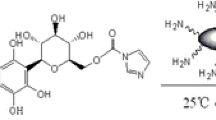Summary
When determining protein contents of hazelnuts in various commercial products such as nut-nougat-cremes and nut purée by electroimmuno-assay according to Laurell, values were found to be dependent on the roasting process of hazelnuts (temperature/time). Up to temperatures of 140 °C for 15–30 min, the influence of roasting was small. In case of industrially roasted hazelnuts, temperatures of 130–135 °C normally are not exceeded. The decrease of intact, native protein was found to be between 20 and 30%. Therefore, conversion factors ranging from 11.1 to 13.1 may be used for calculation: the average factor is 12.1.
Indeed, the different sorts of hazelnuts of different origin have varying amounts of protein, ranging from 9.6% in case of Greek up to 14.7% in case of Chinese hazelnuts. The latter, however, are said to appear rarely on the market.
Recovery tests with cremes and purées give satisfactory results. Values obtained were within the limit of error or only slightly exceeded the theoretical value. The only limiting factor is the use of high-heated nuts (160 °C/35 min). In these cases, too little protein is found in the products. However, these products easily may be recognized because of their bitter, astringent taste. These nuts can hardly be designated “high quality nuts”, which also is in agreement with § 17 of the German „Lebensmittel- and Bedarfsgegenständegesetz”.
Zusammenfassung
Bei Bestimmungen des Proteingehalts von Haselnüssen in verschiedenen Handelsprodukten wie Nuß-Nougatcremes and Nußmus mit der Elektroimmunodiffusion nach Laurell wurde eine Abhängigkeit vom Röstgrad der Haselnüsse (Temperatur/Zeit) festgestellt. Bis 140 °C und 15–30 min Röstzeit ist der Einfluß der Röstung gering. Bei industriell gerösteten Haselnüssen werden normalerweise Temperaturen von 130 °C–135 °C nicht überschritten. Die Abnahme des Gehaltes an intaktem, nativem Protein lag zwischen 20–30%. Daher kann man bei der quantitativen Erfassung mit Umrechnungsfaktoren arbeiten, die zwischen 11,1 und 13,1 liegen. Bei handelsüblichen Röstungen ergibt sich daher ein durchschnittlicher Faktor von 12,1.
Allerdings weisen die verschiedenen Varietäten von Haselnüssen unterschiedliche Proteingehalte von 9,6% bei griechischen bis zu 14,7% bei chinesischen Haselnüssen auf (jeweils bestimmt nach Laurell).
Wiederauffindungsversuche ergaben bei NußNougatcremes und Nußmus zufriedenstellende Ergebnisse. Die erhaltenen Werte lagen innerhalb der Fehlergrenze oder knapp über dem Sollwert. Lediglich bei Verwendung von hocherhitzten Haselnüssen (160 °C/30 min) wird zu wenig Protein im Produkt gefunden. Diese Erzeugnisse sind allerdings an ihrem bitteren, adstringierenden Geschmack erkennbar und als vollwertige Nüsse auch im Sinne von § 17 des Lebensmittel-und Bedarfsgegenständegesetz kaum verwertbar.
Similar content being viewed by others
Literatur
Fincke, A (1936) Handbuch der Kakaoerzeugnisse. Springer Verlag, Heidelberg Berlin
Laurell CB (1966) Anal Biochem 15:45 und (1972) Scand J Clin Lab Inv 29 (Sup1.124):21
Klein E, Baudner S, Günther HO (1985) Z Lebensm Unters Forsch 180:30–35
Bestimmung des Stickstoffgehaltes nach Kjeldahl im Rahmen der Sammlung nach § 35 LMBG, z. B. bei Milch, L 0.100-16
Author information
Authors and Affiliations
Rights and permissions
About this article
Cite this article
Klein, E., Günther, H.O. Bestimmung von Haselnußprotein (Corylin) mit Hilfe der Elektroimmundiffusion nach Laurell. Z Lebensm Unters Forch 180, 36–40 (1985). https://doi.org/10.1007/BF01042909
Received:
Accepted:
Issue Date:
DOI: https://doi.org/10.1007/BF01042909




